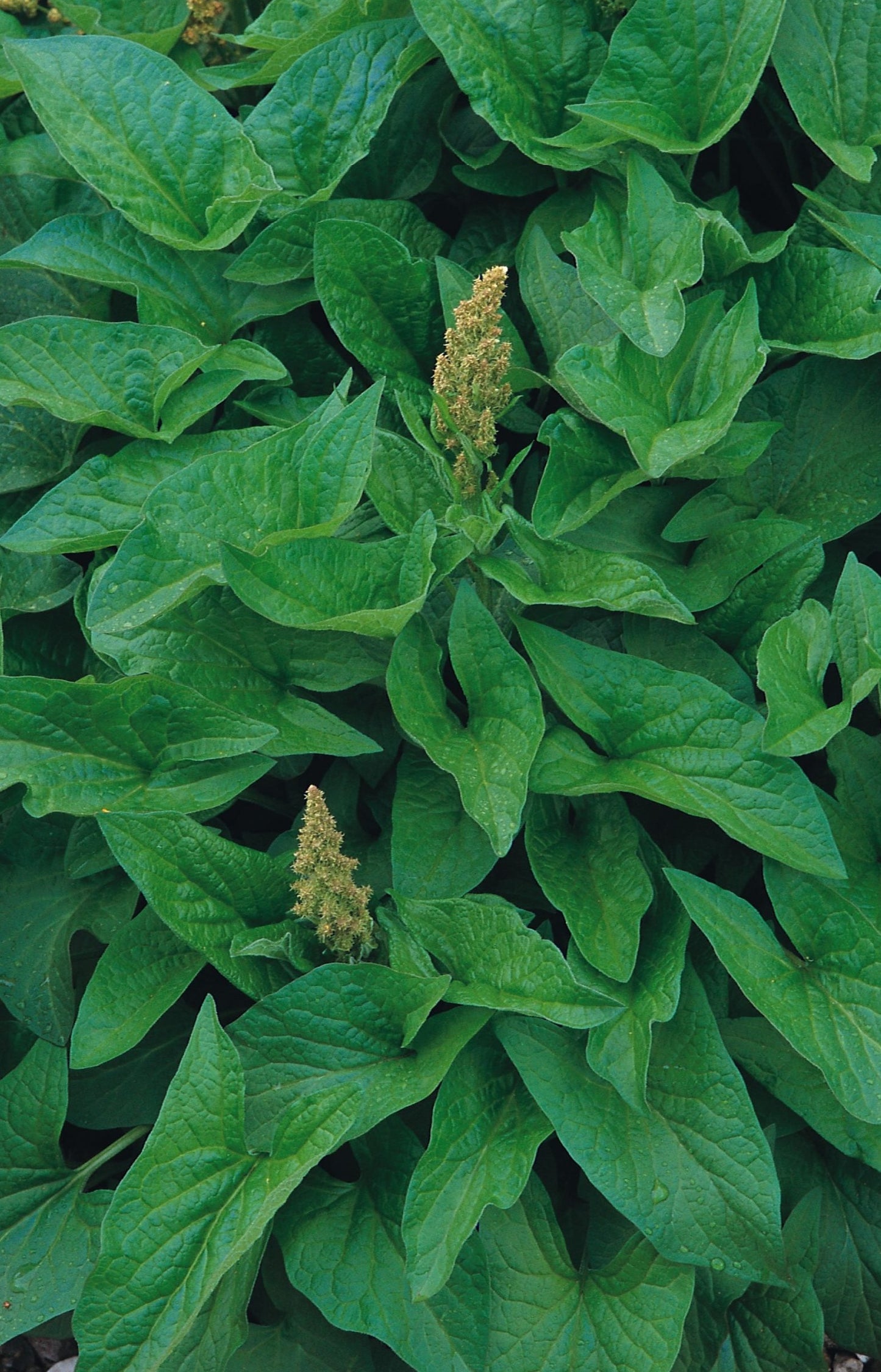Good King Henry
Good King Henry
Packet Size: 50 seeds
Couldn't load pickup availability
Good King Henry (Chenopodium bonus-henricus) is a hardy perennial plant that has been cultivated across Europe for centuries. Traditionally known as Poor Man’s Asparagus and Lincolnshire Spinach, these alternative names hint at its versatile culinary uses. Although historically valued as a medicinal herb, has a rich legacy as a food plant.
Today, it's enjoying a revival thanks to growing interest in permaculture and sustainable gardening. It thrives in temperate climates, requires minimal maintenance once established, and can be harvested year after year. Its resilience, edibility, and historical significance make it a valuable addition to sustainable gardens and food forests.
Add Good King Henry to your garden and rediscover a forgotten favourite—nutritious, perennial, and perfect for low-maintenance growing.
🌱 Seasonal Growing Guide
SPRING
Start seeds in plugs or seed trays, covering lightly with perlite or vermiculite. Keep the compost moist but not waterlogged. Once seedlings are large enough, harden off and transplant outdoors, spacing them about 25 cm apart. Allow the plants a full year to establish before harvesting. For established plants, earth up around the base and begin cutting shoots (12–15 cm long) to use like asparagus.
SUMMER
Harvest flowering spikes as they begin to open. Later in the season, pick the larger leaves and cook them like spinach.
AUTUMN
Top-dress the bed with a thin layer of well-rotted manure or compost to nourish the plants over winter.
📌USES
CULINARY
- Good King Henry is one of the very first greens of the season.
- The young leaves can be eaten raw in salads or cooked like spinach—boiled, steamed, or sautéed.
- The young shoots are especially prized and can be prepared just like asparagus—lightly steamed, grilled, or tossed with butter and lemon.
- The flower buds can also be harvested and sautéed, offering a mild, nutty flavour similar to broccoli tips.
WILDLIFE FRIENDLY
- Acts as a host plant for several moths, including the impressive death’s-head hawkmoth (Acherontia atropos)—its larvae feed on the foliage.
- Supports biodiversity by offering shelter and food to a range of beneficial insects.
- Seed heads left later in the season provide a natural food source for finches and other seed-loving birds.
HISTORICAL
- Pollen evidence suggests Good King Henry has been present near human habitations since the Neolithic & Bronze Age, continuing through Roman times, though its exact role in diets is uncertain.
- In the medieval period, it was commonly found in cottage gardens throughout Europe. It was valued not only for its edible leaves and shoots, but also for its medicinal properties, making it a practical, multifunctional plant for self-sufficient households.
- In Tudor England, the plant became an especially valuable source of nourishment for poorer communities.
- During the 18th–19th Century, Good King Henry remained a staple in rural and subsistence gardens, passed down through generations as a reliable perennial that required little care and returned year after year.
- The 20th Century saw the rise of modern agriculture and commercial crop development, & the popularity of Good King Henry began to decline. This was largely due to the introduction and widespread availability of more commercially popular vegetables, such as modern spinach and beet varieties.
- Today, the interest in sustainable, low-maintenance, and perennial food crops is growing & this forgotten favourite is experiencing a gentle revival.
MEDICINAL
- Good King Henry has a long history of traditional medicinal use. It is considered emollient, laxative, and vermifuge (helps expel intestinal parasites).
- A poultice made from the leaves was used to cleanse and promote healing in chronic sores, boils, and abscesses.
- The seeds are said to act as a mild laxative
- Additionally, the leaves are a natural source of iron, making them a nutritious addition to the diet.
Please note: we do not promote the medicinal use of plants – guidance and information should be sought elsewhere. Always seek professional medical advice and consult trusted sources for health-related guidance.

Collapsible content
Sowing
- Mar
- Apr
- May
- Sep
Harvesting / Flowering
- Jun
- Jul
- Aug
- Sep
- Oct
- Nov

